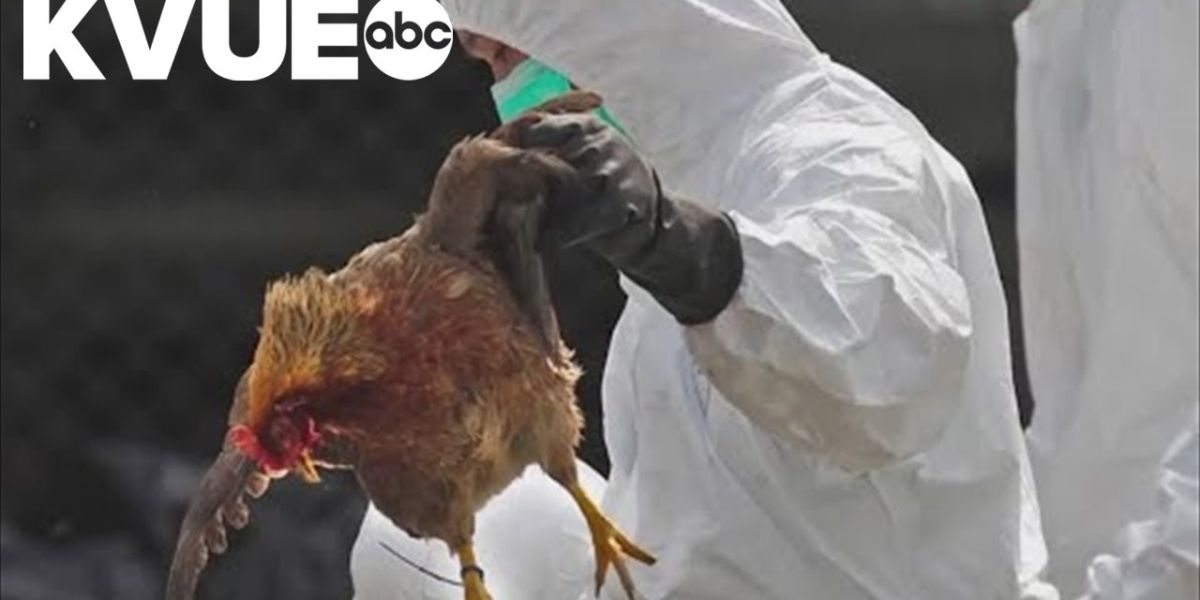Texas Bird Flu Outbreak Threatens to Increase Indiana’s Grocery Bills
Grocery shop costs have steadily climbed since the beginning of the COVID-19 epidemic, owing to inflation, increased demand, damaged supply chains, and other factors. According to HelpAdvisor, the average American household spends more than $1,000 on groceries per month, with Indiana residents spending $239.11 per week on average.
While Indiana is toward the bottom of the national grocery spending scale, a recent development in Texas might have long-term consequences, perhaps raising costs on grocery store shelves.
Cal-Maine Foods, the country’s largest egg supplier, had to halt production after poultry at a Texas plant tested positive for bird flu, the firm said Tuesday.
Positive tests for pathogenic avian influenza (HPAI) occurred at a commercial facility in Palmer County, resulting in the slaughter of approximately two million chickens, including 1.6 million hens and 337,000 pullets, or young chicks. This is around 3.6% of the company’s overall flock.
The decision came shortly after the Centers for Disease Control and Prevention announced that a person in Texas had been infected with the virus after coming into close contact with dairy cattle, and less than a week after sick dairy cattle in Texas and Kansas tested positive for the virus, according to USA Today.
What Does This Mean for Hoosiers? Here’s Everything We Know:
Cal-Maine Foods is the largest egg producer in the country:
Cal-Maine Foods, headquartered in Ridgeland, Mississippi, is the nation’s largest producer and distributor of fresh shell eggs, selling the majority of its eggs in states in the Southwest, Southeast, Midwest, and MidAtlantic.
The corporation stated that it “remains committed to robust biosecurity programs across its locations; however, no farm is immune to HPAI.” HPAI is still present in the wild bird population, and the magnitude of future outbreaks, with increased risk during migration seasons, cannot be forecast.”
Cal-Maine Foods stated that it was seeking “to secure production from other facilities” to minimize interruption to its customers.
Cal-Maine Foods, Indiana
Cal-Maine Foods, the nation’s largest egg supplier, has various manufacturing and distribution facilities across the country, including its headquarters in Mississippi. While Indiana has no breeding facilities, feed mills, pullet facilities, or distribution hubs, neighboring states like as Kentucky and Tennessee do.
Cal-Maine Foods also owns the brands Eggland’s Best, Land O’ Lakes, Farmhouse, and 4-Grain, many of which are available in Indiana supermarkets. Kroger, Meijer, Target, and other local retailers sell Eggland’s Best.
In the fiscal year 2023, the company sold over 1.1 billion eggs and generated 3.1 billion in yearly net sales, with over 42.2 million laying hens. Culled chickens from the recent outbreak make up only 3.6% of the whole flock, yet this could result in a large number of eggs lost.
The Intermountain Farmers Association estimates that the average hen produces approximately 250 eggs per year. With two million chickens killed, more than 500 million eggs might be lost during the fiscal year 2024, increasing the cost of a carton.
Person Tests Positive for Avian Flu in Texas
In a second news release this week, the Texas Department of State Health Services stated that the patient fell “ill following contact with cows presumed to be infected with avian influenza” and that their major symptom was conjunctivitis, also known as pink eye.
The person who tested positive for bird flu in Texas is just the second known case in the United States, according to state and federal officials.
Bird Flu Affects Dairy Cattle in Kansas and Texas
The USDA said last week that HPAI had been detected in unpasteurized clinical samples of milk from ill cows at two dairy farms in Kansas and one in Texas, as well as a swab from a dairy cow in Texas.
The virus is thought to have originated in wild migratory birds, according to the USDA, and viral testing and epidemiological investigations are still ongoing.
What is Bird Flu?
Bird flu is a disease caused by a group of flu viruses that mostly spread among birds.
According to the CDC and USDA, avian influenza viruses are divided into two types: low pathogenic avian influenza (LPAI), which is commonly detected in wild birds, and high pathogenic avian influenza (HPAI), which is mostly seen in domestic poultry. According to the CDC, LPAI viruses produce minimal to no disease, but HPAI viruses cause severe disease and significant fatality rates in infected birds.
Bird flu has cost the government approximately $660 million and has recently increased the price of eggs and poultry. Last year, at least 58 million birds were slain to help curb the virus’s spread.
Bird Flu Poses a Modest Risk to Humans
The first avian influenza case in the United States was reported in Colorado in April 2022.
Federal and state health officials are examining the occurrences, and the USDA stated that the risk to the general population from contracting is low because the viruses are rarely spread from person to person.
“However, people with close contact with affected animals suspected of having avian influenza A have a higher risk of infection,” Texas health officials stated in a news warning earlier this week.
Bird Flu Symptoms in Humans
According to the CDC, humans can become infected with bird flu through direct contact with diseased birds or by touching sick birds’ saliva, mucus, or feces. People catch the virus when it enters their eyes, nose, or mouth, or when it is inhaled.
Those who get the virus frequently experience mild ailments such as an eye infection and upper respiratory symptoms, or no symptoms at all, whereas others can develop a serious, potentially fatal disease such as pneumonia.
Indicators of Bird Flu
The following are signs that a bird may have avian influenza infection:
loss of appetite, lethargy
Sudden death without previous symptoms
Eyelid swelling.
Twisting of the head and neck.
Purple discoloration of body parts, particularly waddle and legs.











